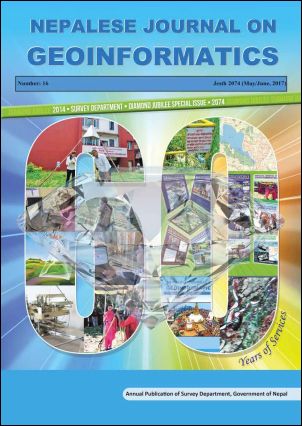Concept in Determining the Height of Mount Everest (Sagarmatha)
DOI:
https://doi.org/10.3126/njg.v16i1.51411Keywords:
Height determination, sea level, gravimetric geoid, Mount EverestAbstract
In this paper we describe the concepts in determining the height of the Mt. Everest and elucidate the method of height measured relative to sea level. The current height determination procedure is limited by the accuracy of the calculation of height of the sea, (less than +/- 2m) or its mathematical approximation the geoid. Although Nepal has been recognizing 8848m as the official height of the Everest, many climbing team and scientific explorations from different countries in different time have been conducted and achieved different numerical values of height of the Everest. The challenging issue is defining the elusive sea level with or without nearby shoreline. Through some recognized media it has been made public that the Government of Nepal have plan to ascertain the height of Mt. Everest and if it is so this would be the first attempt by Nepal government to determine the height on its own. Survey Department under the Ministry of Land Reform and Management is the authoritative organization to translate Government’s decision into action. Depending on the nature of the work; in order to accomplish the measurement, the complete task is divided into five parts such as Precise leveling survey, Determination gravimetric geoid, Trigonometrical leveling, Global Positioning System (GPS) Survey and Data processing. Survey Department, lacks in enough resources and infrastructures for completing this project in the complex environment of the most rugged High Himalayas therefore some other potential International Scientific organization can be expected to join hands in the process of height determination.




